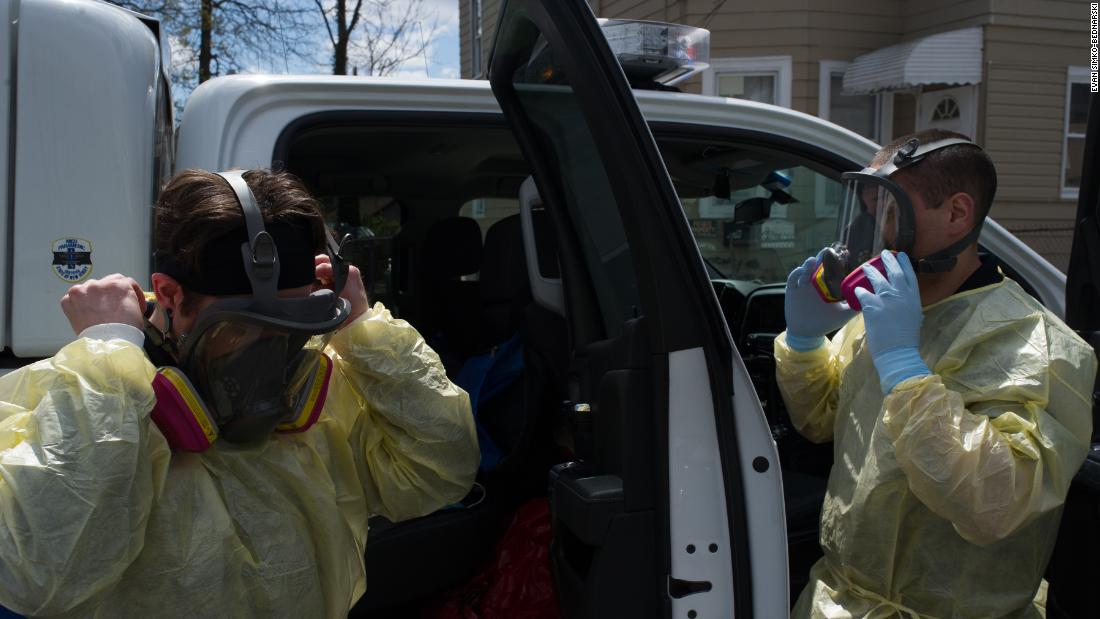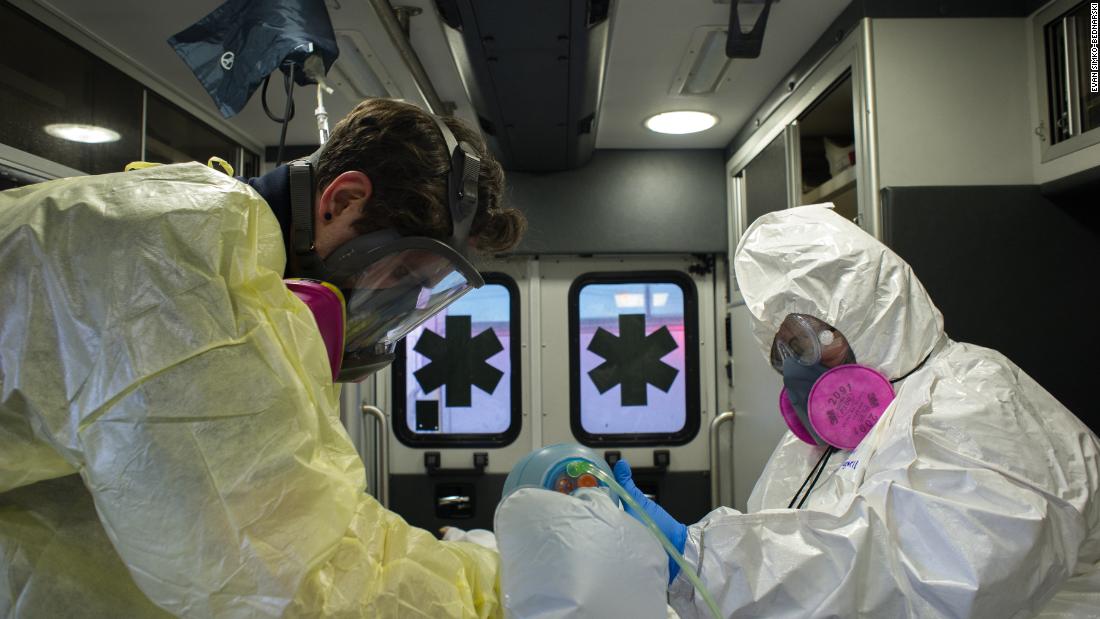https://us.cnn.com/2020/04/30/us/paterson-pandemic-paramedics/index.html
'Anybody who says they're not scared during this is lying to you.' A day in the life of paramedics in a pandemic
By Evan Simko-Bednarski, CNN
Updated 5:01 PM ET, Thu April 30, 2020
Paterson, N.J. (CNN)The man lay unconscious in the back of the ambulance, parked in front of the nursing home on the Passaic River. Another life slipping away before the paramedics of Paterson, N.J.
The call had come in as a 61-year-old male with difficulty breathing. The dispatcher had flagged it as a probable Covid-19 case. A woman wearing scrubs and a face mask peered down from the window at Complete Care nursing home as paramedics Alex Storzillo and Jim Incorvaia entered, wearing respirators that covered their whole face.
Inside, they found the man, who had a fever for several days, and was now barely alert. His oxygen saturation and blood pressure were very low.
He needed to be intubated and rushed to the hospital, where he could be placed on a ventilator.
For Storzillo and Incorvaia and so many paramedic colleagues across the country, this is their new routine, their daily grind: Trying to save lives while risking exposure to Covid-19, the deadly disease caused by coronavirus.
'No such thing as being more sick than that'
Paramedics Alex Storzillo and Jim Incorvaia adjust their respirators before entering a house.
In the ambulance, standing by the man's feet near the open rear doors, Storzillo, 29, prepared what he'd called "half of a lethal injection," a combination of sedative and paralytic meant to halt a patient's breathing so that the paramedics could take over.
Incorvaia, 31, phoned ahead to the emergency room. "He feels very hot," he said to the doctor on the other end of the line. "We know he has Parkinson's, he has kidney failure, and he has (a history of) hypertension."
Back in the ambulance, the man's blood pressure was so low that Storzillo couldn't find a vein to administer the drugs. Instead, the paramedics drilled into the man's shin, allowing Storzillo to inject the medication into the man's bone marrow.
In about a minute, the man was completely paralyzed.
Now up at the man's head, Incorvaia began to work. Aided by a small video camera placed down the throat, Incorvaia guided a breathing tube through the man's mouth, past his vocal cords, and into his trachea.
Storzillo works on an intubated patient while Nicole Tugwell, an EMT on loan from Baltimore, keeps the patient breathing.
Storzillo came up alongside and attached a tough plastic bladder to the tube, squeezing it rhythmically. He had now taken over the most fundamental of human tasks: breathing.
Sitting at the man's chest, Nicole Tugwell, an emergency medical technician on loan from Baltimore, took the bag. For the next 10 minutes, as the ambulance headed to the hospital, she would be the man's lungs.
Storzillo, meanwhile, placed a blood pressure cuff around a bag of saline solution hanging from the ceiling and tied in to the IV. He pumped up the cuff in an effort to squeeze the bag and maintain the patient's blood pressure.
Later, after delivering the man to the emergency room at St. Joseph's Regional Medical Center in Paterson, Incorvaia summed up the patient's condition.
"There really is no such thing as being more sick than that," he said.




